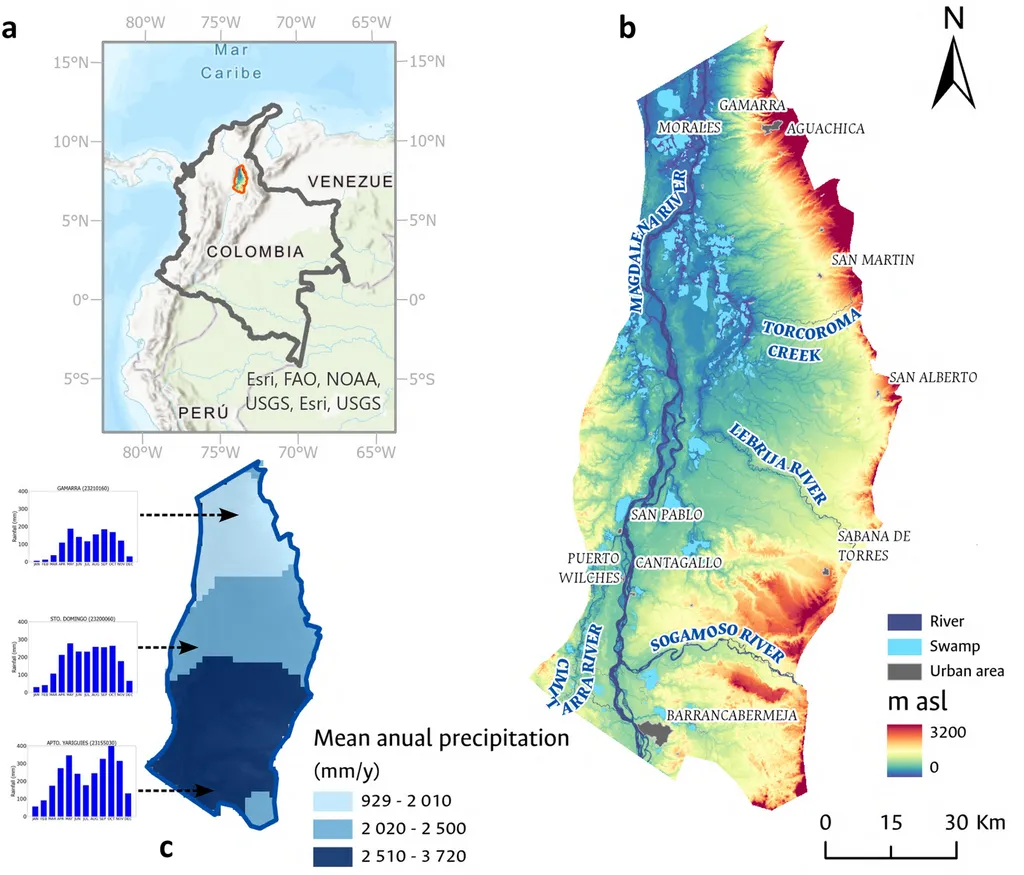In the heart of Colombia’s tropical Andean region, a critical study has emerged that could reshape how we manage groundwater resources, with significant implications for the energy sector. Diego A. Martínez Carrillo, a researcher from the Universidad Católica de Manizales, has mapped and assessed aquifer recharge areas in the Chinchiná River Basin, providing a framework that could be replicated in similar regions worldwide.
The study, published in the journal *Water Cycle* (translated as *El Ciclo del Agua*), leverages secondary data and GIS-based spatial analysis to identify potential aquifer recharge zones. This is particularly crucial in areas grappling with land-use changes and climate variability. “Identifying these recharge zones is essential for sustainable groundwater management,” Martínez Carrillo emphasizes. “It’s about ensuring that we have a reliable water source for both current and future needs.”
The research highlights three main recharge zones: the southeastern Rioclaro River sub-basin, the northeastern Guacaica River sub-basin, and the flatlands near the Cauca River mouth. These areas exhibit varying infiltration rates, influenced significantly by vegetation cover. Dense forests, for instance, show higher retention capacity compared to agricultural or urban areas. “Vegetation cover plays a pivotal role in infiltration rates,” Martínez Carrillo notes. “Protecting these areas is not just about conserving water; it’s about safeguarding our future.”
The findings underscore the importance of integrating hydrogeological assessments into regional land-use planning. This aligns with national policies such as Colombia’s National Water Policy and the United Nations Sustainable Development Goal 6, which aims to ensure availability and sustainable management of water and sanitation for all.
For the energy sector, the implications are profound. Groundwater is a vital resource for energy production, particularly in hydropower plants. Understanding and managing aquifer recharge areas can ensure a steady water supply, crucial for maintaining energy generation capabilities. “This research provides a replicable framework for identifying recharge areas in similar tropical Andean basins,” Martínez Carrillo explains. “It’s a step towards more sustainable and resilient energy production.”
The study also sheds light on the threats posed by deforestation and unplanned urban expansion. Unprotected zones such as the Guacaica and Cauca rivers are under increasing threat, highlighting the need for proactive conservation measures. “Protecting these areas is not just about conserving water; it’s about safeguarding our future,” Martínez Carrillo reiterates.
As we look to the future, this research could shape developments in hydrogeology and water resource management. By providing a clear methodology for identifying and assessing aquifer recharge areas, it offers a roadmap for sustainable groundwater management. This is not just about scientific advancement; it’s about ensuring that we have the resources we need to power our communities and industries for generations to come.
In a world grappling with climate change and resource depletion, Martínez Carrillo’s work serves as a beacon of hope. It reminds us that with the right tools and knowledge, we can manage our resources sustainably and secure a brighter future for all.

